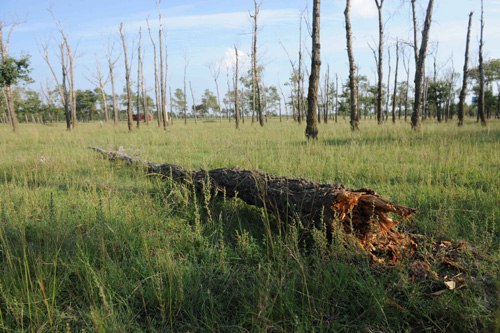Green Great Wall
Beijing Review, November 19, 2013 Adjust font size:
|
|
|
AGING AND DYING: A dead poplar lies rotting on the ground surrounded by a dying forest in Zhangbei County, Hebei Province, on August 21 |
Large-scale undertaking
Poplar forests in Zhangbei are part of China's ambitious Three-North Shelterbelt Program, also known as the Green Great Wall, which is intended to slow the expansion of the country's northern deserts.
The program began in 1978 with the aim of increasing forest coverage from 5 to 15 percent across an area of 4.07 million square km. Once completed in 2050, the shelterbelt will measure 4,480 km from east to west, and will stretch 560 and 1,460 km from north to south at its narrowest and widest sections. Its total area will amount to 4.07 million square km, which equates to about 42.4 percent of China's total land area.
The program is creating windbreaks in 551 counties across 13 provinces, autonomous regions and municipalities in China's north, northwest and northeast. In the two decades before the initiation of the program, more than 4,000 square km of farmland in these regions was overtaken by deserts, while a further 8,670 square km suffered from reduced production due to sandstorms. Hundreds of reservoirs were also depleted and turned into desert over the period.
When the program is finished, it is estimated that it will directly benefit over 90 percent of the near half a million square km of the country's land whose desertification can be potentially curbed or reversed.
The latest data from the SFA showed that, as of the end of 2012, forest coverage in the treated areas had increased from the 5.05 percent in 1977 to 12.4 percent.
According to Xinhua News Agency, by the end of August this year, the Three-North Shelterbelt Program had successfully planted and cultivated forests totaling 267,000 square km.
The program launched its fifth, and the most recent, of eight planned phases, in 2012, which has three primary goals: creating another 100,000 square km of forests to boost local forest coverage to 12 percent by 2020; controlling the worsening desertification in 30 percent of at-risk farmland; and slowing or stopping topsoil erosion in half of the farmland at risk in the targeted areas.



